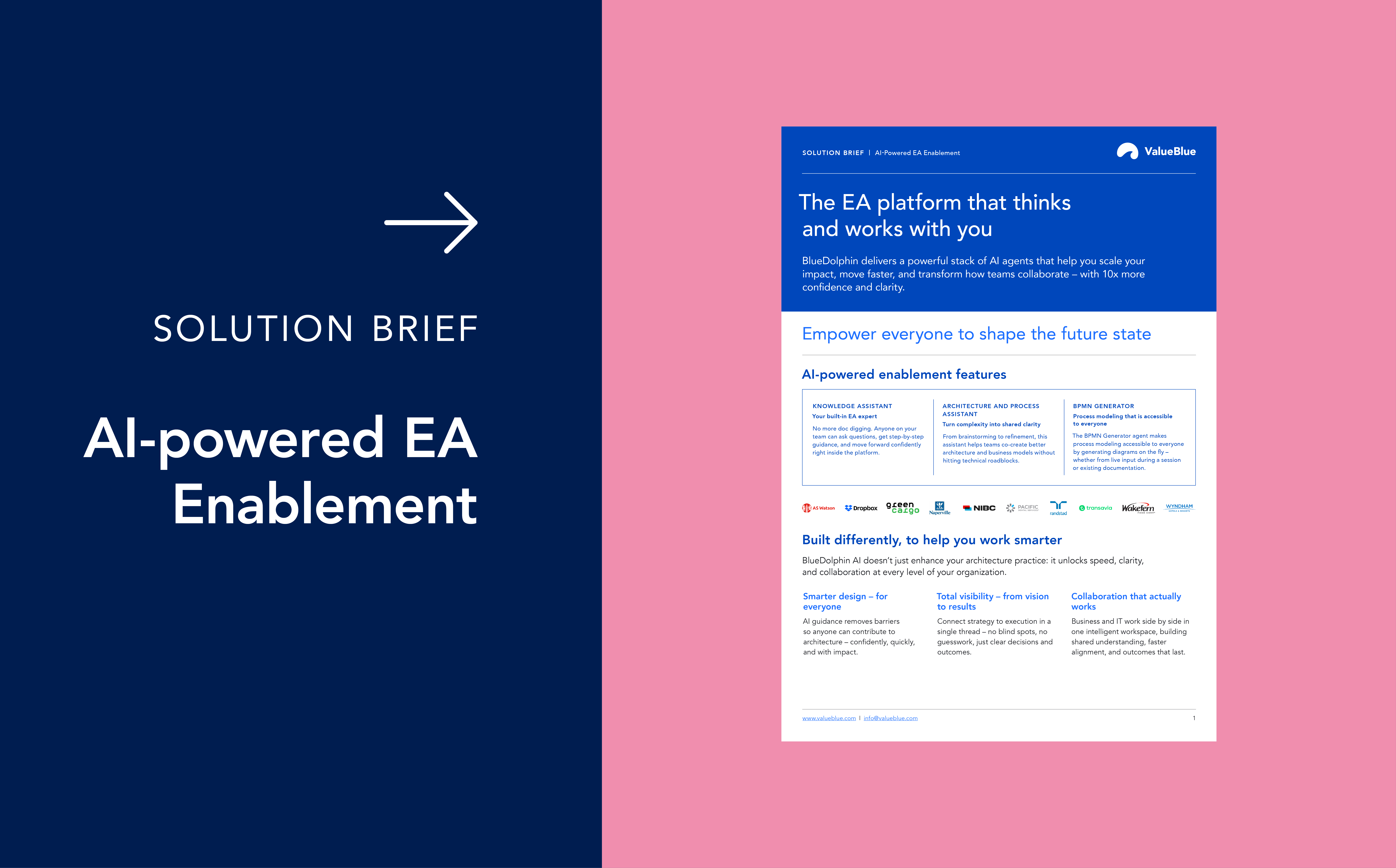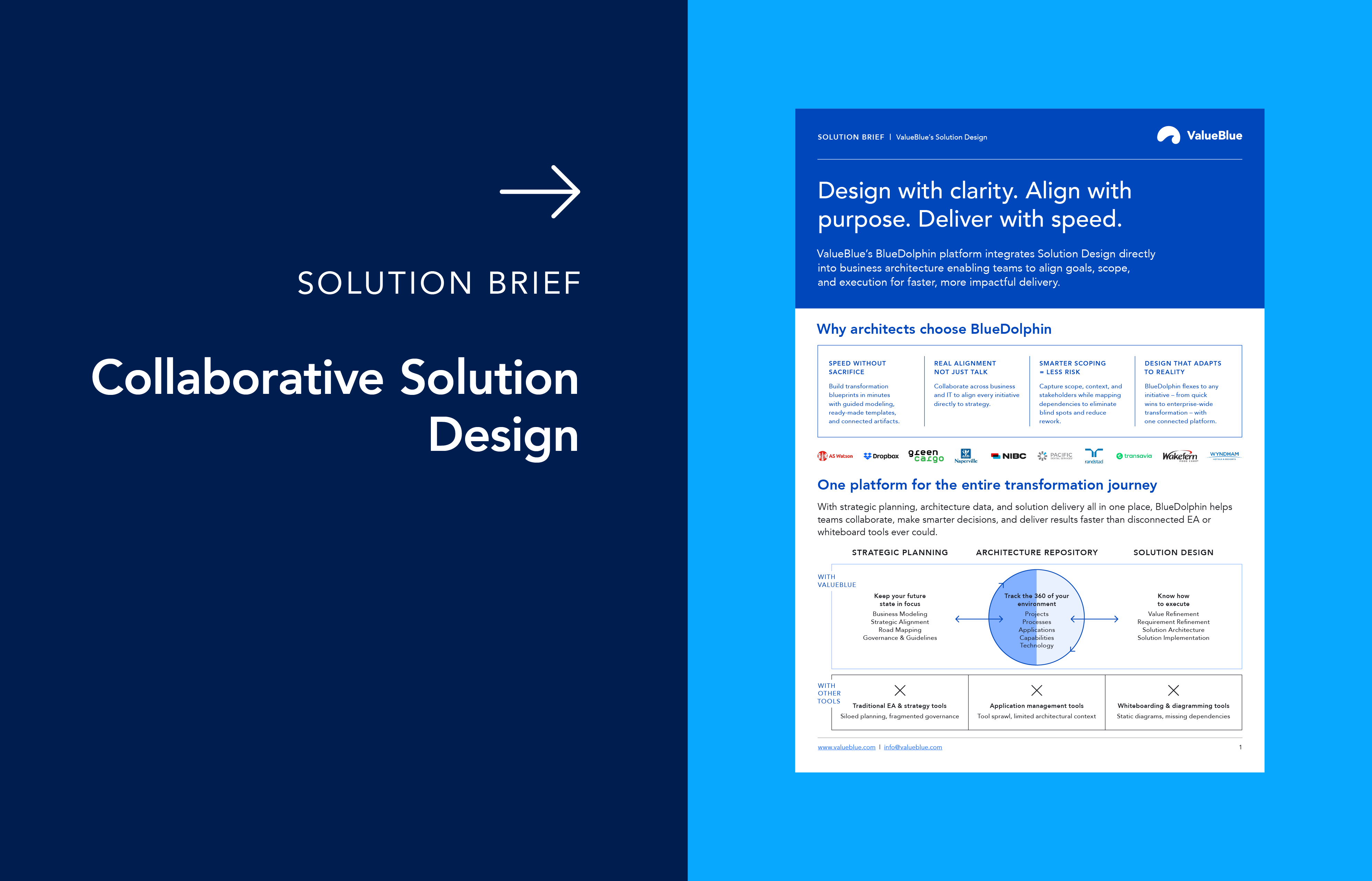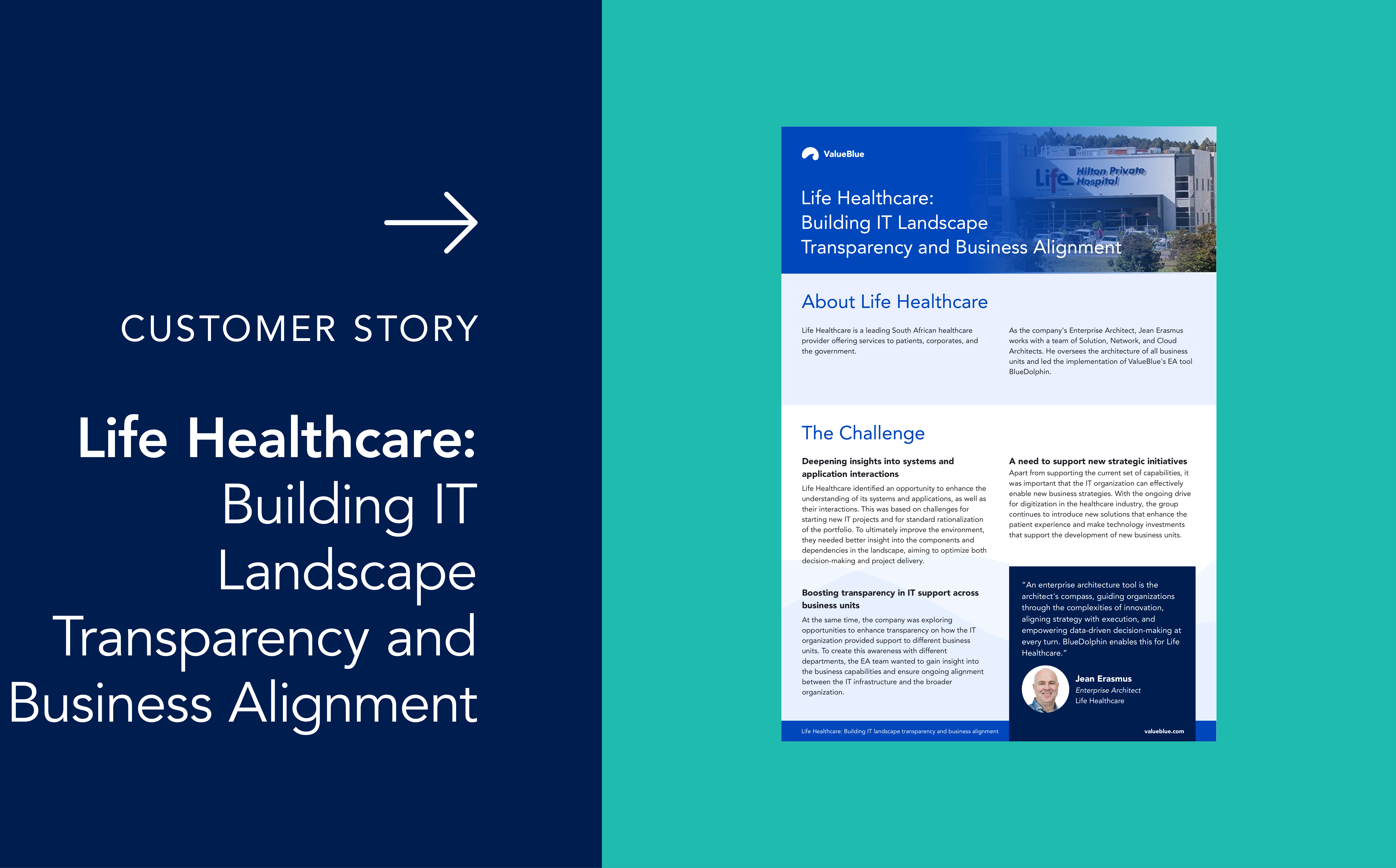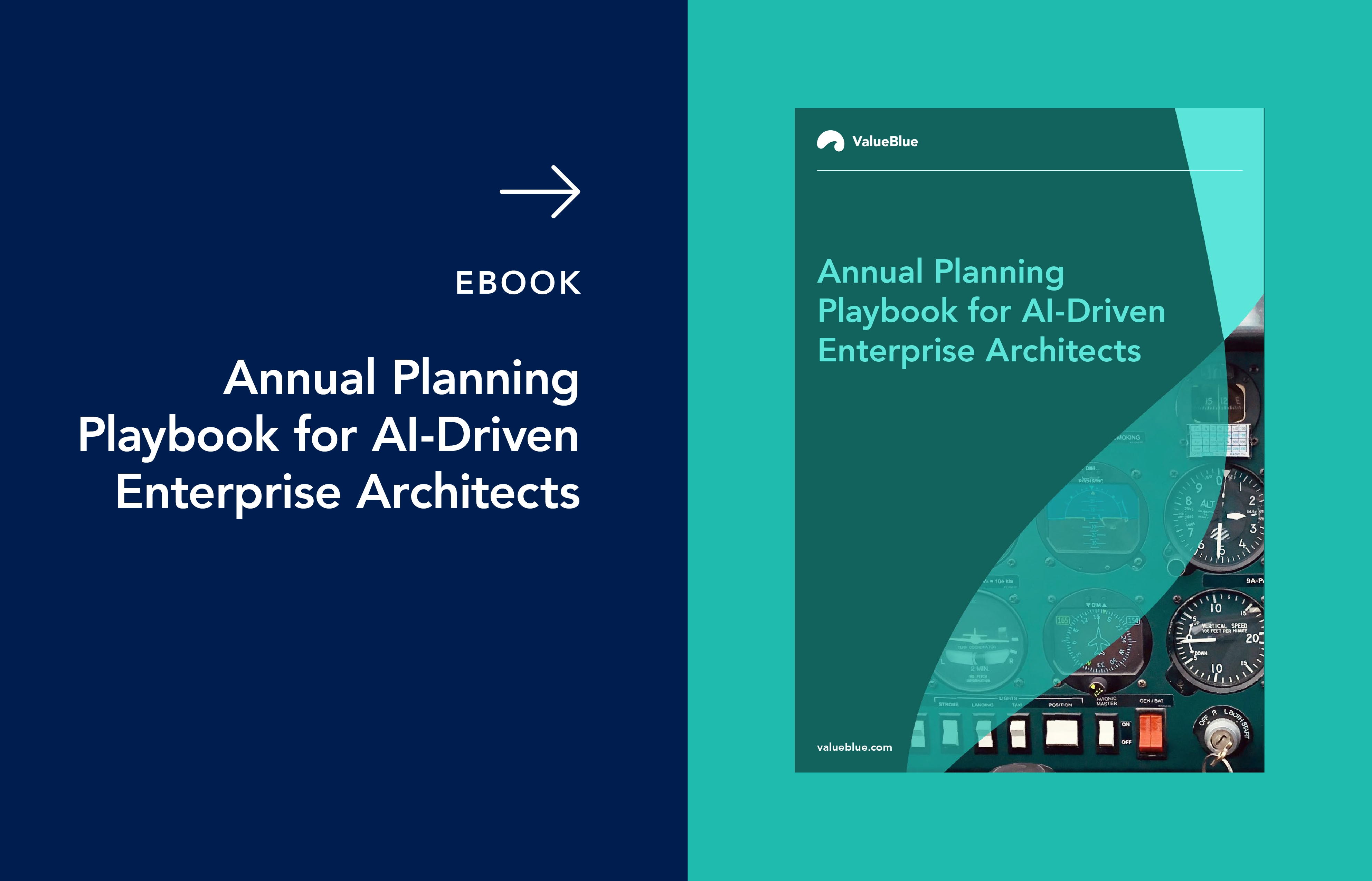Municipality of Ede
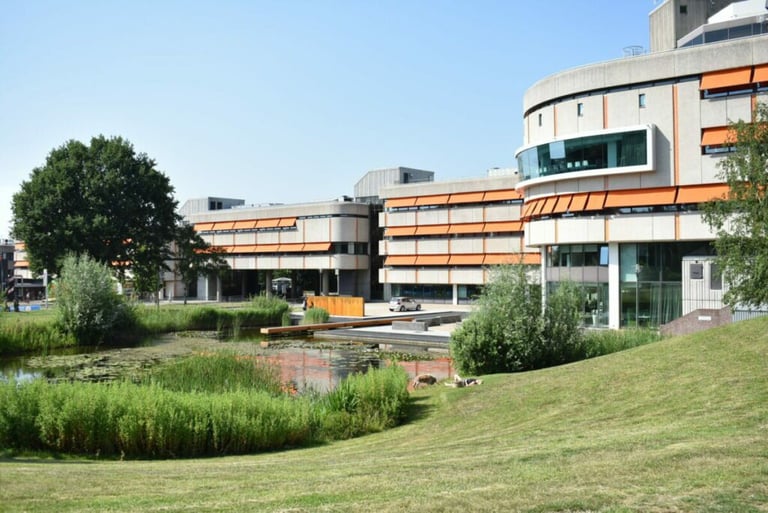
Who is Municipality of Ede?
In 2017, the Municipality of Ede started using BlueDolphin to gain a better insight in its Enterprise Architecture and data. Peter Manders, CIO and Manager Information, Process & Project Management at the Municipality of Ede tells us why BlueDolphin is so important not just for the people working for the municipality but also for the residents.
Peter: "When I started working here two-and-a-half years ago, it was common practice to just start working on a project. For example, an invitation to tender had to be issued for a new software package: a new supplier appeared, so the old one was out and the new one was in. Only then was it decided who would start working with that new software package and how it would be used. That cost a huge amount of time because you had to talk with the technical people and find out how it would affect everything.
"A new software package has many new functionalities that need to be linked to all sorts of processes. Naturally, that often culminates in scope changes as things always turn out to be more complex than you expected. You could never start and finish efficiently without extras.
"When I was in my first year here and went to the Board Management for the umpteenth time to ask for more money because one project was 70,000 euros short or another project needed 30,000 euros extra, they weren’t very happy to see me. They said things had to change. And things can change – by clearly showing which projects are planned for the near future so that we can prepare for them. When I started working here, we were 60% in control. Now we’re over 95%!
"But more importantly, if something changes do we realize what we’re getting ourselves into? We had to be able to predict what was going to happen, which processes and applications would be affected and so whom we needed to deploy where in a new project. When you have that understanding, you also know what you need. Now 99% of our projects are on budget. I call that a positive result!"
“We’re not using BlueDolphin to lower our costs but to build a future-proof, efficient, effective, and sustainable organization.”
Peter Manders, CIO and Manager Information, Process & Project Management at the Municipality of Ede
Why BlueDolphin by ValueBlue?
"I used to work for the municipality of Eindhoven and I had already used BlueDolphin there. But it didn’t actually matter to me which tool I used as long as it did the job properly. We compared your costs with those of your competitors and you had an advantage there. We also measured your product by its level of user-friendliness, but the most important thing for me was the enthusiasm of my people for BlueDolphin. They looked at all the products on the market and they believed in BlueDolphin. They saw the added value and found it very easy to work with.
And of course, it’s all about whether a product is easy to use or not.
"User-friendliness is so important when you want to generate enthusiasm in your people. Because you need that enthusiasm if you want to do the job properly. We’re also looking at whether we’ll use more BlueDolphin modules, but there too it’s important that the people who’ll work with the product are committed to it. I want to build up that commitment step by step. So we’ll start building it up gradually once we’re completely comfortable working with Architecture."
Our architects are eager to start
"I facilitate, inspire and motivate my people. That’s my job. It’s not me who’s the driver – it’s the users with the tool. If I decide to so something else in the future, these people will still have to be enthusiastic enough to keep using the tool. It can’t all collapse like a house of cards, because that would mean I’ve done something wrong. That’s how I see it.
"With that philosophy in mind, I’m getting things done here, but then in such a way that others become enthusiastic and end up taking it over. That’s when I’ve done my job as a CIO. Our architects are really eager to do more, because they understand why we’re using Enterprise Architecture and why we’re doing it on so many layers. Governance is important for this. If your Project Start Architecture isn’t in order, you don’t get approval for your project.
"That means we work out everything down to the last detail so that we’re prepared for everything: the total cost of ownership. That makes the client happy and it makes us happy too, because it’s how we get approval to start a project. And that project ultimately makes a real contribution, on time and on budget. That’s the bottom line, after all. This insight also helps us decide NOT to do things. If we turn the project into a business case and estimate what it costs, managers can then easily see whether those costs compare to the benefits. So sometimes it’s decided NOT to start a project. And the things that you DON’T do are as important as the things that you DO do."
The Cube
"To inspire that commitment even more in all the employees, back in the day I asked a trainee to make a cube. We put copies of this cube on tables and desks everywhere and some of them are still around the place. Each cube displayed a visual representation of all the questions asked by the business. With every layer and every level, every functional need translated into “What do you need?”. In our case, this isn’t the 9-level model (the control model for supply and demand), but the 12-level model, because when that model was designed in the 1980s it didn’t yet have a data level. Datafication is very important; automation, computerization, digitisation and datafication, so the 12-level model.
"The cube also has a side full of key figures. 100,000+ residents in the municipality, 5,000 hardware components, 800 laptops, 375 applications, and so on. That shows you at a glance which connections exist and why Enterprise Architecture is so important. This inspired a range of different dialogues, which is what I wanted, and then everybody started to see the added value of Enterprise Architecture.
"The extent to which I was able to work with architecture here in the Municipality of Ede is much greater than I was ever able to do in my whole career. Here I’ve created and been given the ability and the freedom to roll out and implement architecture on a large scale, because when you get the architecture right you have a high return.
"A good example is the continuity plan, with all the current ICT. When you effectively map out which ICT supports which (critical) processes, you see what can go wrong in a continuity scenario and you have a clear overview of when and where you must intervene. So it’s really important to have everything mapped out. In a municipality, this is much more important than in other organizations, because a municipality has a very diverse range of products and services that we provide to businesses and residents. That’s much more than a normal production company or service provider. The same applies to our application landscape.
"Here in the Municipality of Ede, we’re using 375 applications to keep all the services running. There are 33 specialist departments, the public space with permits, infrastructure and the road network. Parking management, (youth) welfare, social support, safety, enforcement, etc. All the departments busy doing their own thing. All of them are actually small companies with their own specific products and services and therefore their own applications."
Data is gold!
"There was already a partial overview of our applications in Visio, but it’s very labor-intensive. Maintaining it is a huge job. For example, when it involves a large project with major changes, it’s extremely difficult to coordinate and connect everything. It’s just about possible in an application landscape, but underneath that, you have physical IT in two data centers. And above that, there are again a number of links and all kinds of overlaps with exterior facilities. Because municipalities have interfaces with national facilities and again many more partners compared to other companies.
"The exchange of information is increasing – we still have a lot on-premise and in data centers – but more and more is disappearing into the Cloud and SaaS solutions, which means the management of data and information is becoming increasingly complex. Then it’s really important that you have insight and oversight with BlueDolphin, so that when you change something somewhere you can see how it affects the entire organization.
"These days, we’re also receiving more and more data. Take a simple example such as the lampposts in our municipalities. When you make all the relevant data and processes accessible and transparent, it’s much easier to determine which lamps must stay switched on at night and which must be switched off. It results in fewer accidents and saves energy at the same time. This is just one example of why EA and insight are so important for a municipality. We also need this type of data to keep our shopping mall safe and attractive and to keep improving it. Data is gold.
"With these types of concrete examples, BlueDolphin doesn’t just help the internal organization, it also contributes directly to the development of the city center, the outlying areas, and local business and their needs. It leads to higher-quality and faster services and ultimately to a more pleasant living environment for everybody in the municipality. We’re not using BlueDolphin to lower our costs but to build a future-proof, efficient, effective, and sustainable organization. And we’re doing it to create greater added value in our organization."
